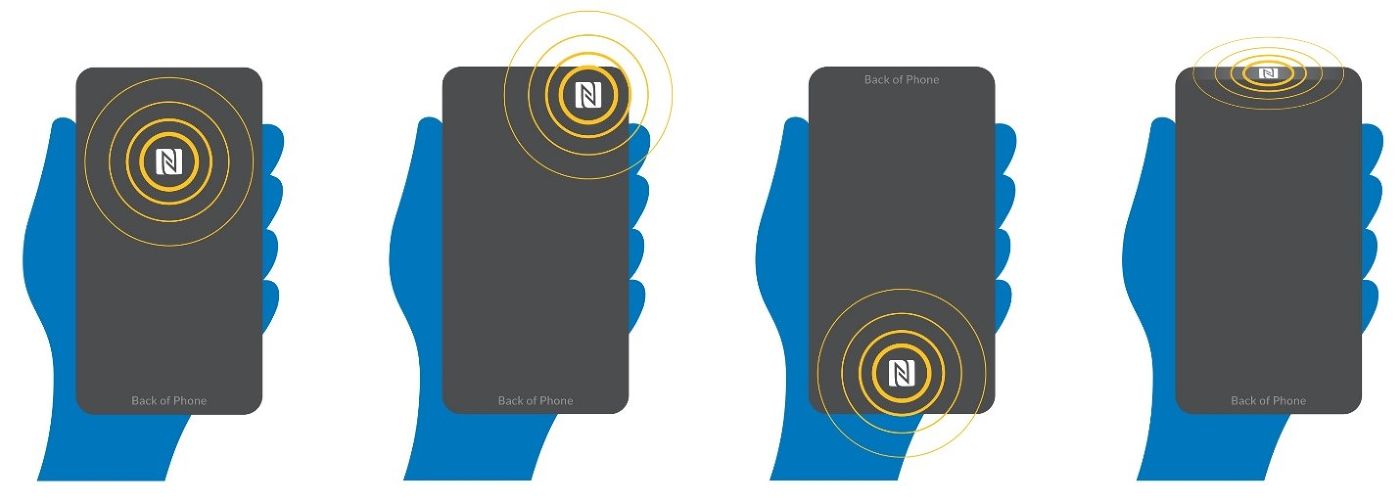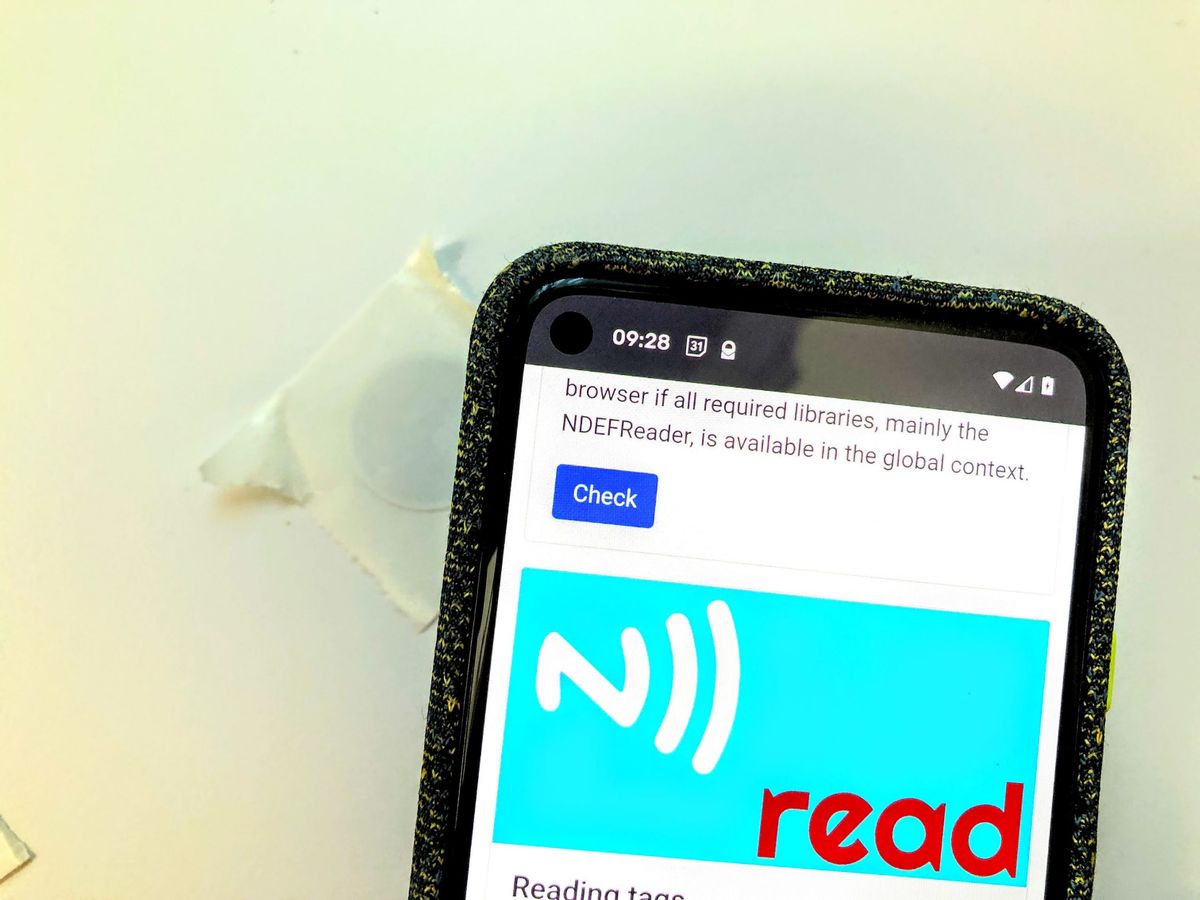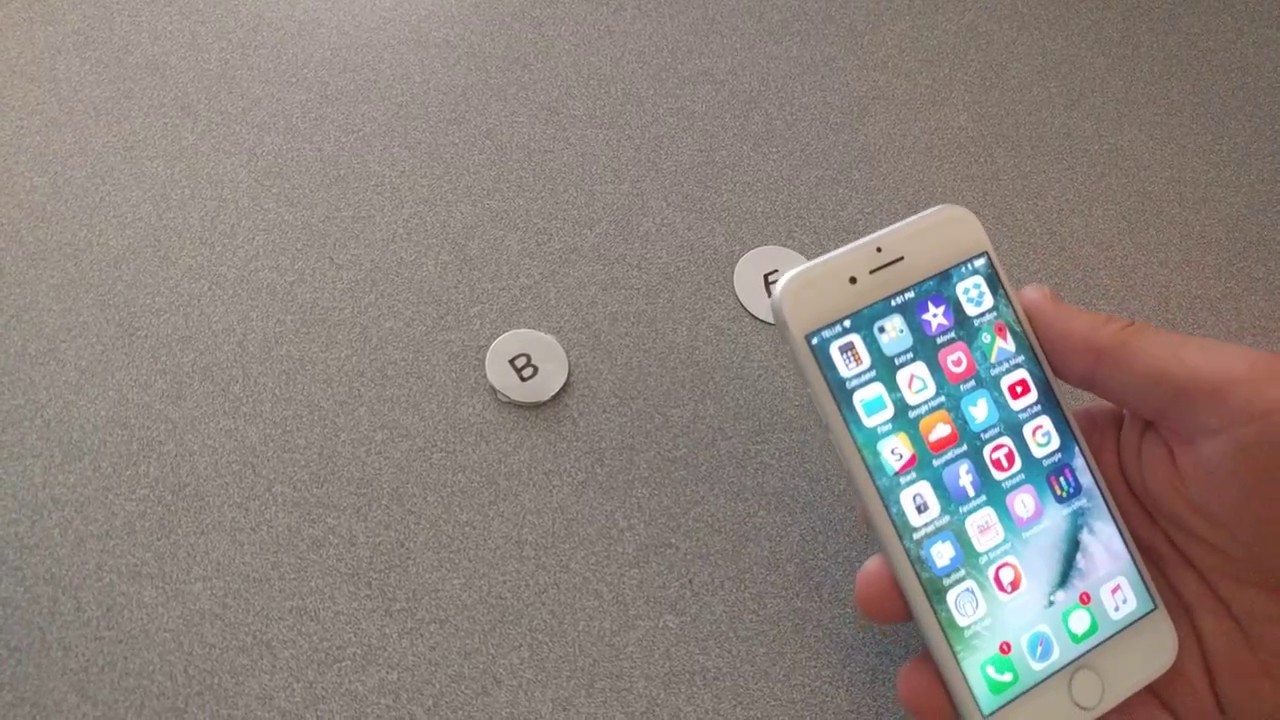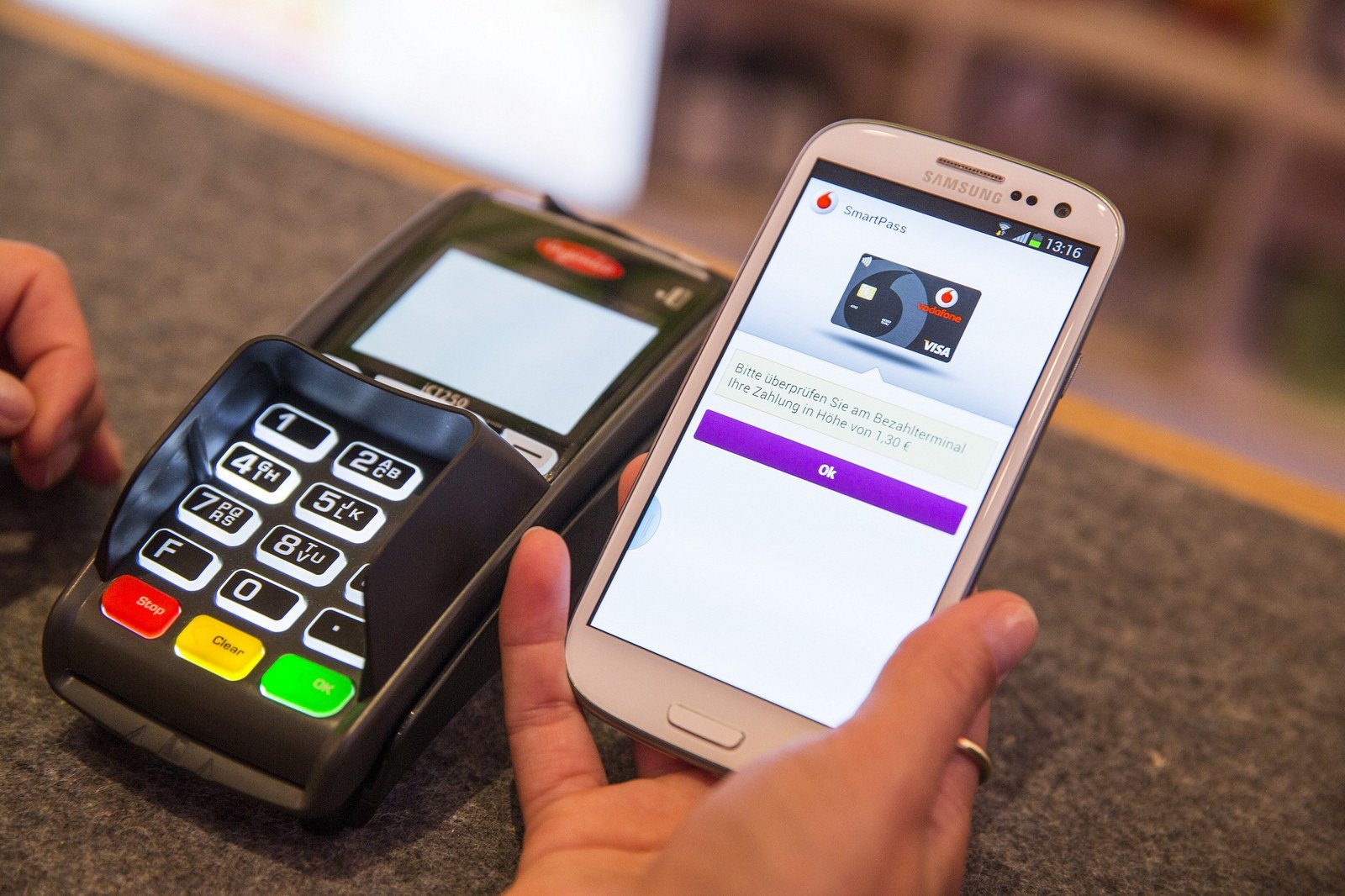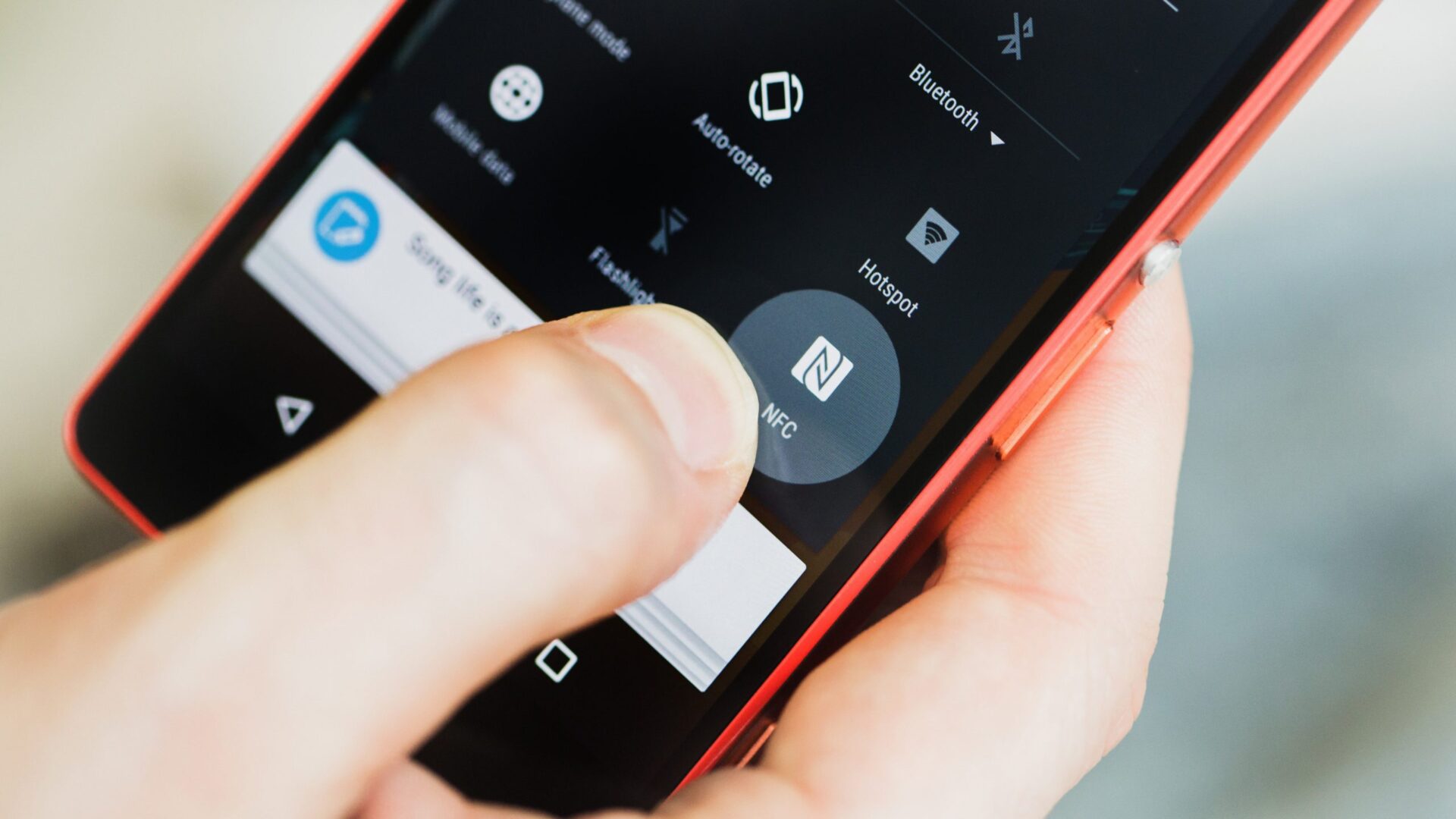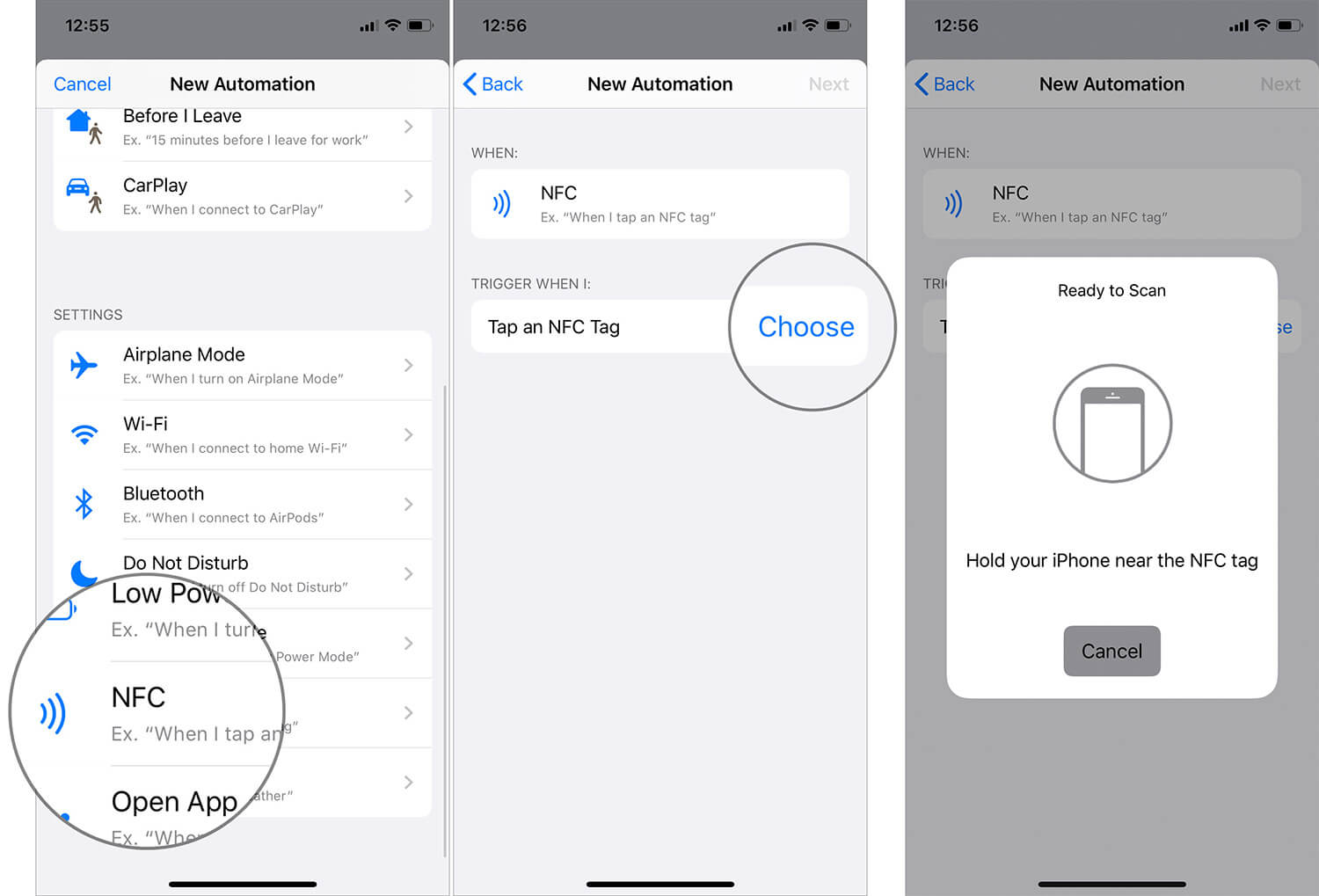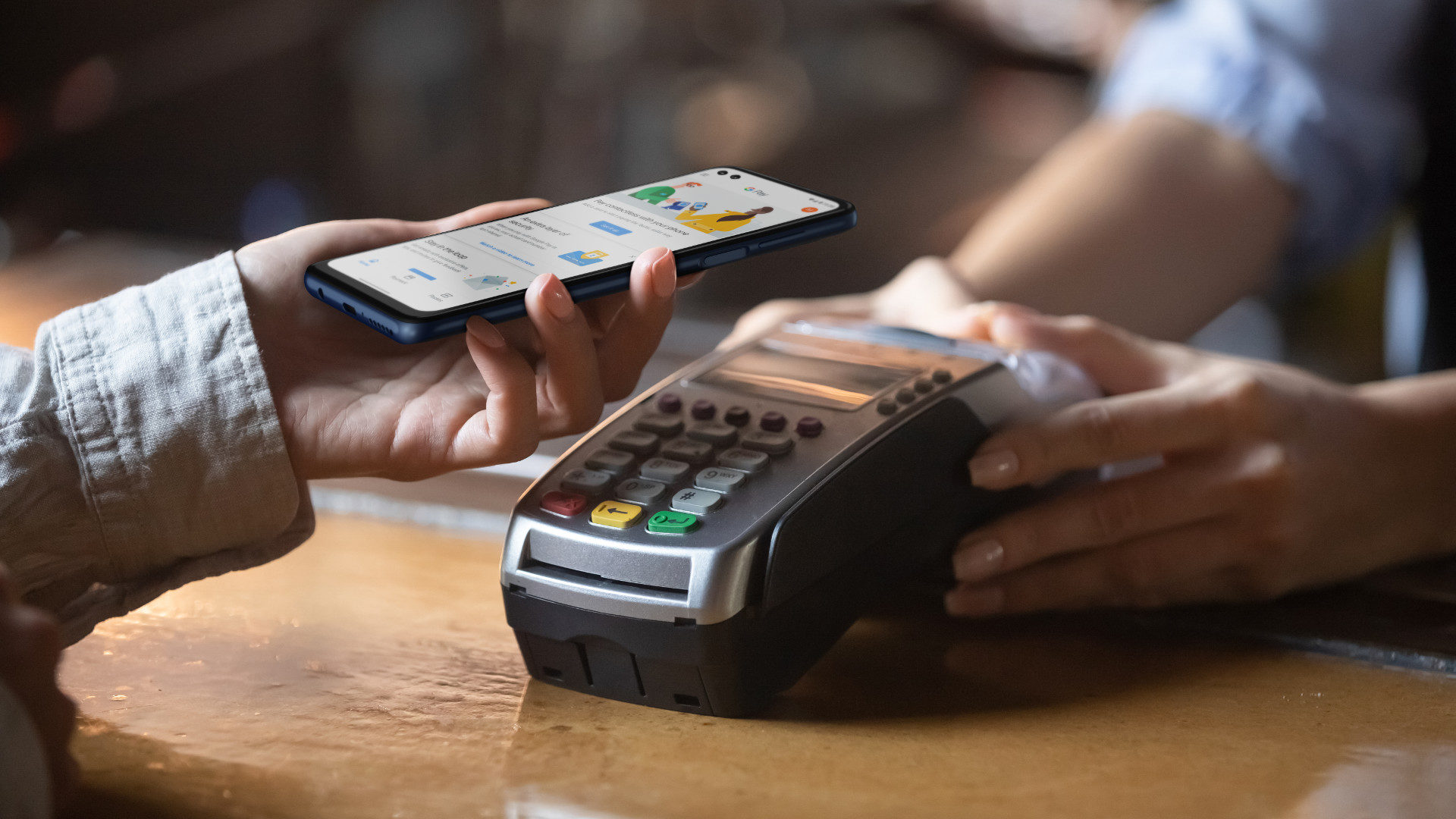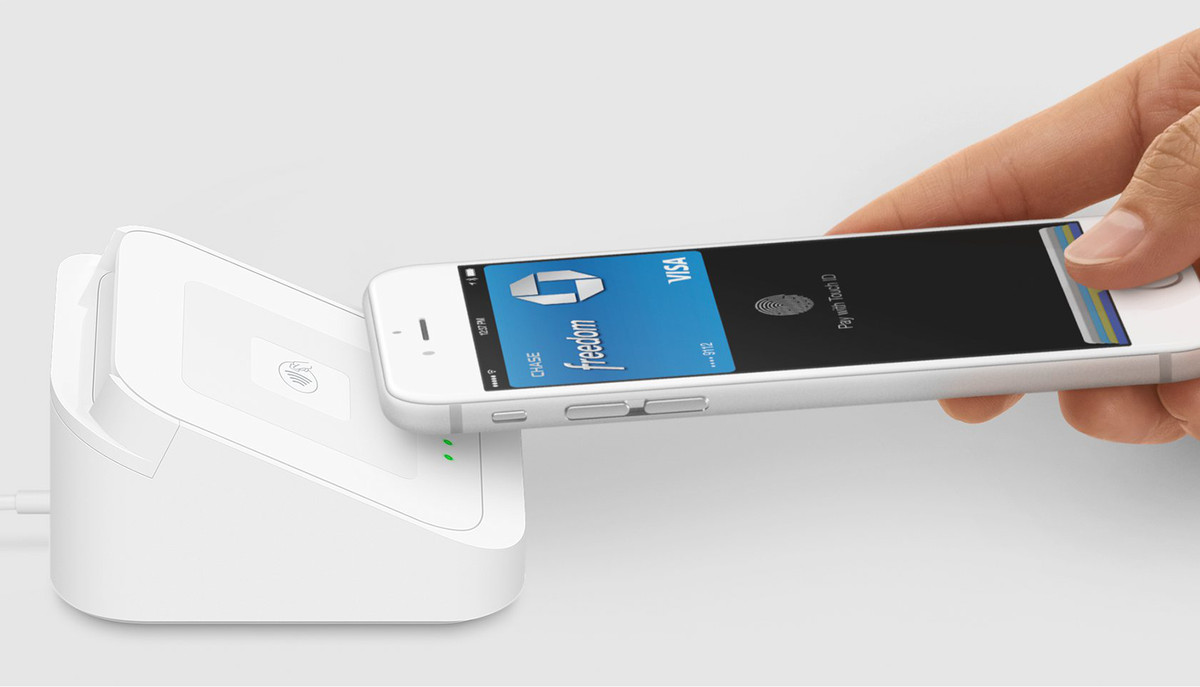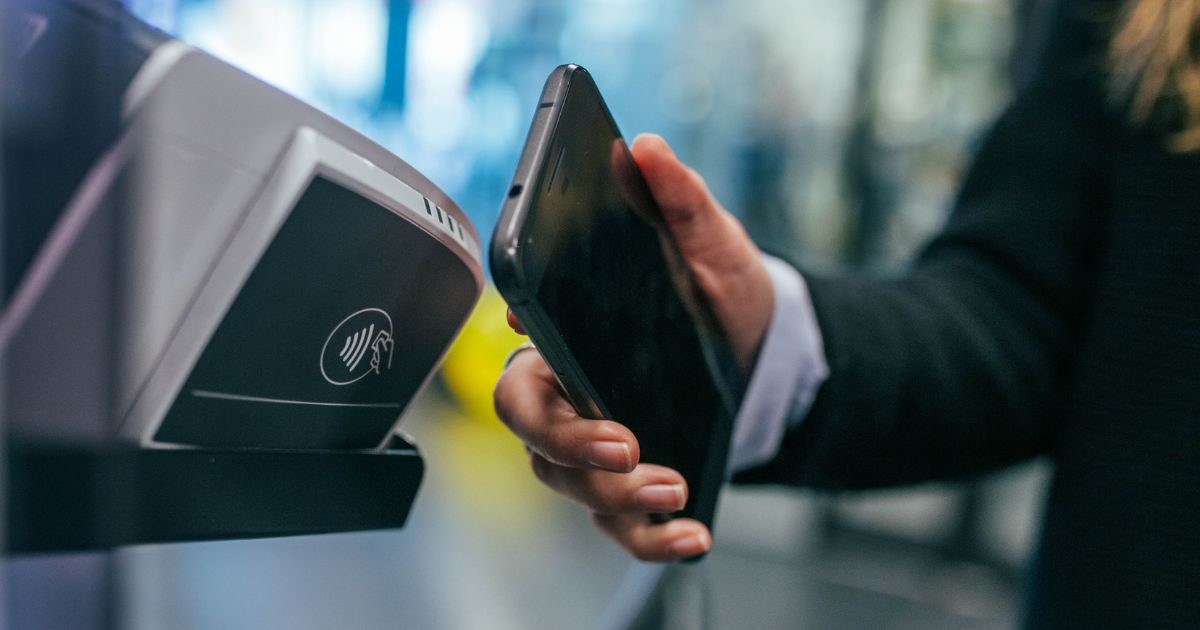What is NFC?
Near Field Communication (NFC) is a wireless communication technology that allows devices to establish a connection by simply touching or being in close proximity to each other. It operates on a short-range frequency, typically within a few centimeters, making it ideal for secure and convenient data exchange.
NFC technology is built upon the principles of radio frequency identification (RFID) and is commonly found in smartphones, tablets, and other electronic devices. It enables these devices to interact with various NFC-enabled objects, such as tags, cards, and other devices.
Unlike technologies like Bluetooth or Wi-Fi, NFC does not require complex setup or pairing processes. It works seamlessly by utilizing passive and active NFC modes to transmit and receive data. In passive mode, NFC devices can send and receive data, while in active mode, devices can take on more complex roles, such as reading NFC tags.
NFC technology offers several advantages, including:
- Convenience: NFC allows for effortless connectivity, eliminating the need for manual setup or configuration.
- Security: NFC employs encryption techniques to ensure secure communication between devices, mitigating the risk of unauthorized access or data interception.
- Versatility: NFC can be used for a wide range of applications, such as mobile payments, access control, data transfer, and more.
- Speed: NFC transactions are typically completed within seconds, making it a fast and efficient way to exchange information.
- Compatibility: NFC technology is widely supported across different platforms and operating systems, making it accessible to a large number of devices.
Overall, NFC technology is a powerful communication tool that simplifies various tasks and enhances user experiences. Its widespread adoption and compatibility have led to the development of numerous applications and use cases, revolutionizing industries such as mobile payments, transportation, retail, and hospitality.
In the next sections, we will explore how to check if your phone has NFC, enable NFC on your device, and discover the common uses for NFC technology.
NFC-enabled Devices
NFC technology has become increasingly prevalent in modern smartphones and other smart devices. While not all devices are equipped with NFC capabilities, many flagship phones and popular brands include the feature as a standard option.
Android devices, in particular, have seen widespread adoption of NFC technology. Most Android smartphones released in recent years are NFC-enabled, including popular models from Samsung, Google, LG, and Motorola. It’s worth noting that NFC is not limited to high-end devices and can also be found in mid-range and budget-friendly options, allowing a wider range of users to benefit from this technology.
As for Apple devices, NFC availability is limited to specific functionalities. iPhones starting from iPhone 7 and newer models have NFC capabilities, primarily used for Apple Pay functionality. While the iPhone’s NFC capabilities are currently restricted to Apple’s own applications, there is potential for broader access in the future.
Aside from smartphones, NFC technology can also be found in other smart devices, such as tablets, smartwatches, and even some laptops. These devices often integrate NFC for seamless communication and data exchange with other compatible devices.
If you’re unsure whether your device has NFC capabilities, you can check the specifications provided by the manufacturer. Additionally, you can also look for the NFC logo or antenna on the device’s exterior, usually located near the back or side of the device. This visual indicator signifies NFC capability.
It’s important to note that older or more entry-level devices may not have NFC, as the technology has become more common in recent years. If NFC is a feature you specifically desire, be sure to verify its availability before making a purchase.
In the next section, we will discuss how to check if your phone has NFC.
How to Check if Your Phone has NFC
Checking whether your phone has NFC capabilities is a quick and straightforward process. There are a few methods you can use to verify NFC availability on your device:
- Check the device specifications: The easiest way to determine if your phone has NFC is by referring to the device’s specifications. This information can usually be found on the manufacturer’s website or in the user manual. Look for a section that mentions NFC support or wireless communication technologies.
- Inspect the device: You can physically check your phone for any NFC-related markings or indicators. Look for the NFC logo, which resembles a sideways Wi-Fi symbol, or an area on the phone’s back or sides with a symbol depicting a series of curved lines or waves. These visual cues often indicate the presence of NFC technology.
- Use a third-party app: There are several free apps available on app stores that can quickly determine if your phone has NFC capabilities. One popular choice is the NFC Check app, which can scan your device’s hardware configuration and provide information about NFC support.
- Consult the user manual: If you still have the user manual that came with your phone, it may contain information about NFC support. Look for the index or table of contents to locate any sections related to wireless connectivity or NFC.
By using these methods, you can easily determine if your phone has NFC capabilities before proceeding with any NFC-related activities. If your device does not have NFC, you may consider alternative options, such as using external NFC accessories or upgrading to a newer device that supports NFC.
Now that you know how to check if your phone has NFC, let’s move on to enabling NFC on your device in the next section.
Enabling NFC on Your Phone
To take advantage of NFC capabilities on your phone, you’ll need to ensure that NFC is enabled. The process may vary slightly depending on your device’s operating system, but the general steps are as follows:
- Access settings: Open the settings app on your phone. This can usually be done by tapping on the gear or cog icon in the app drawer or notification shade.
- Locate “Connections” or “Wireless & Networks”: In the settings menu, look for options related to connections or wireless networks. The exact wording may vary depending on your device.
- Find NFC settings: Once you’re in the Connections or Wireless & Networks section, look for an option specifically labeled “NFC” or “Near Field Communication.” It may be listed under a subcategory like “Advanced” or “More.”
- Toggle NFC on: Once you’ve located the NFC settings, simply toggle the switch to turn NFC on. It may be represented by a slider or a button that can be tapped to enable or disable NFC.
- Configure preferences: Depending on your device, you may have additional options related to NFC. These can include settings for Android Beam, NFC payments, or automatic actions when NFC tags are detected. Explore these settings and adjust them according to your preferences.
After enabling NFC, your phone is ready to connect and interact with other NFC-enabled devices, tags, or cards. Keep in mind that NFC capabilities may also require certain permissions or app settings to be enabled for specific functions, such as making payments or accessing certain NFC-enabled features.
If you encounter any issues enabling NFC or accessing NFC-related settings on your device, consult the user manual or the manufacturer’s support resources for guidance specific to your phone model.
In the next sections, we will explore how to use NFC on Android devices and iPhones, as well as discover common uses for NFC technology.
How to Use NFC on Android Devices
Once NFC is enabled on your Android device, you can start utilizing its functionality for a variety of purposes. Here are some common ways to use NFC on Android:
- Android Beam: Android Beam allows you to quickly share content, such as webpages, contacts, apps, and more, between two NFC-enabled devices. To use Android Beam, ensure NFC and Android Beam are enabled on both devices, then simply touch the backs of the devices together. Follow the on-screen prompts to initiate the transfer and send the selected content.
- Mobile Payments: NFC-enabled Android devices also support mobile payment services like Google Pay, Samsung Pay, or other banking apps. To make a payment, simply unlock your device, hold it near a compatible payment terminal, and follow the prompts to complete the transaction securely and conveniently.
- Using NFC Tags: NFC tags are physical objects embedded with programmed information that can trigger specific actions when touched or brought near an NFC-enabled device. With an NFC-capable Android device, you can easily interact with NFC tags to automate tasks or configure settings. Simply navigate to the NFC settings on your device and ensure that “NFC Tag Reading” or a similar option is enabled. Then, when you tap an NFC tag, the device will recognize it and perform the associated action, such as opening a website, launching an app, or altering phone settings.
- NFC Payments with Contactless Cards: Some Android devices not only support mobile payments but also allow you to use them as contactless card readers. You can add credit or debit cards to your device’s payment app and use it to make payments by holding the device near payment terminals that accept contactless cards. This feature eliminates the need to carry physical cards and enhances convenience.
These are just a few examples of how NFC can be utilized on Android devices. The versatility of NFC technology enables developers and users to explore countless other possibilities, such as smart home automation, data transfer between devices, and more.
It’s important to note that the actual usage and available features may vary slightly depending on the device’s manufacturer, Android version, and installed apps. Be sure to familiarize yourself with the specific NFC functions and capabilities of your Android device to fully maximize its potential.
Next, let’s explore how to use NFC on iPhone devices.
How to Use NFC on iPhone
NFC functionality on iPhones has been primarily focused on Apple Pay, the mobile payment service provided by Apple. While the NFC capabilities of iPhones are currently limited to Apple’s own applications, there are still ways to utilize NFC on your iPhone:
- Apple Pay: If you have an iPhone with NFC, you can easily set up and use Apple Pay to make secure and contactless payments at supported stores, restaurants, and online platforms. Simply add your credit or debit card to the Wallet app, authenticate your identity with Touch ID or Face ID, and bring your iPhone near a compatible payment terminal to complete the transaction.
- Accessing NFC-enabled Accessories: Some accessories and devices, such as Bluetooth speakers or headphones, may use NFC for quick and reliable pairing with your iPhone. By bringing your iPhone close to the NFC tag or NFC pad of the accessory, you can establish a seamless connection between the two devices, eliminating the need for manual pairing or configuration.
- Scanning NFC Tags: With the release of iOS 13 and newer versions, iPhones gained the ability to scan and read NFC tags. This allows you to interact with NFC-enabled objects or locations that contain specific information. To scan an NFC tag, simply launch the iPhone’s built-in NFC reader by holding your iPhone near the tag. The device will automatically detect and display the associated content, such as opening websites, launching apps, or showing contact details.
It’s important to note that while iPhones can scan NFC tags, they do not currently support writing data to NFC tags. This means that you can only read information from NFC tags with your iPhone, rather than writing or programming new information onto the tags.
As iPhone NFC functionality continues to expand, there may be additional uses and features made available to users in future updates. Stay up-to-date with the latest iOS versions and explore the capabilities offered by third-party apps for more NFC experiences on your iPhone.
In the next section, let’s explore some common uses for NFC technology that go beyond mobile payments and device connectivity.
Common Uses for NFC Technology
NFC technology offers a wide range of applications and use cases beyond just mobile payments. Here are some common uses for NFC technology:
- Access Control and Security: NFC can be used for secure access control systems, such as keyless entry to buildings or restricted areas. By simply tapping an NFC-enabled card or device, authorized personnel can gain entry, eliminating the need for physical keys or access codes.
- Public Transportation: NFC technology is widely used in contactless payment systems for public transportation. Commuters can easily tap their NFC-enabled smartphones or cards on turnstiles or ticket readers to pay for fares, making public transit more efficient and convenient.
- Smart Posters and Advertisements: NFC tags can be embedded in posters or advertisements, allowing users to tap their NFC-enabled devices to receive additional information, discounts, or promotional offers. This interactive feature enhances user engagement and provides a seamless way to bridge the gap between physical and digital advertising.
- Inventory Management and Tracking: NFC tags and labels can be used to track and manage inventory in businesses. The tags can store information about products or assets, enabling efficient inventory management, real-time tracking, and streamlining supply chain operations.
- Electronic Ticketing and Event Management: NFC technology simplifies ticketing systems for events, concerts, and conferences. Attendees can easily tap their NFC-enabled devices or tickets to gain entry, reducing the need for physical tickets and improving overall event management.
- Healthcare Applications: NFC technology is utilized in various healthcare settings. It can be used for patient identification, medication management systems, and storing medical data on NFC-enabled cards or devices for easy access by healthcare professionals.
- Automation and Internet of Things (IoT): NFC can be integrated with smart home devices, allowing users to control various aspects of their homes by tapping NFC-enabled tags or devices. This could include adjusting lighting, setting heating or cooling systems, or even starting specific sequences of actions within a smart home ecosystem.
These are just a few examples of how NFC technology is used in various industries and scenarios. As technology continues to advance, we can expect NFC to play an even bigger role in simplifying our everyday lives and improving the way we interact with the digital world.
In the next section, we will discuss some troubleshooting tips for common NFC issues.
Troubleshooting NFC Issues
While NFC technology is generally reliable, you may encounter some issues when using it. Here are some troubleshooting tips to help you resolve common NFC problems:
- Ensure NFC is enabled: Double-check that NFC is enabled on your device. Go to the settings menu and make sure the NFC option is toggled on.
- Remove obstructions: Ensure that there are no physical obstructions, such as metal cases or thick covers, blocking the NFC antenna on your device.
- Clean the NFC area: Sometimes dust or dirt can accumulate on the NFC area of your device or NFC tags. Clean them gently with a soft, lint-free cloth to ensure a clear connection.
- Check NFC compatibility: Verify that the NFC tag or device you are attempting to connect with is compatible with your device. Some older or non-standard NFC devices may not work seamlessly with all NFC-enabled smartphones.
- Restart your device: Performing a simple restart on your device can sometimes resolve temporary software glitches or conflicts that may be affecting NFC functionality.
- Update your software: Ensure that your device’s operating system is up to date. Manufacturers often release software updates that can address known NFC issues and improve overall performance.
- Reset NFC settings: If you are experiencing persistent NFC issues, you can try resetting the NFC settings on your device. This will revert the NFC-related settings to their default state, potentially resolving any configuration errors.
- Contact support: If none of the above steps resolve your NFC issues, reach out to the manufacturer’s support team or visit an authorized service center for further assistance.
By following these troubleshooting tips, you can often overcome common NFC issues and ensure that your device is ready to seamlessly connect and interact with NFC-enabled objects or devices.
Remember, as with any technology, NFC performance can vary depending on the specific device and environmental factors. Experimenting with different positioning or adjusting settings can help optimize your NFC experience.
Now that you’re equipped with troubleshooting knowledge, you can confidently utilize NFC technology without being deterred by minor obstacles.
Conclusion
NFC technology is a powerful communication tool that allows devices to establish a connection by simply touching or being in close proximity to each other. With its convenience, security, and versatility, NFC has transformed various industries and enhanced user experiences.
In this article, we discussed what NFC is and its widespread adoption in smartphones, tablets, and other smart devices. We explored how to check if your phone has NFC capabilities and how to enable NFC on Android and iPhone devices. We also touched upon common uses for NFC technology, including mobile payments, access control, inventory management, and more.
We provided troubleshooting tips to help you overcome common NFC issues and ensure a seamless connection between NFC-enabled devices or tags. By following these troubleshooting steps, you can maximize the benefits of NFC technology and enjoy a smooth user experience.
As technology continues to evolve, we can expect NFC to become even more prevalent and integrated into our daily lives. Its potential for simplifying tasks, enhancing security, and enabling seamless data exchange is vast.
Whether you’re using NFC for mobile payments, sharing content, accessing secure areas, or automating tasks, this technology offers countless possibilities. Understanding how to utilize NFC effectively empowers you to take advantage of its capabilities and explore new ways to interact with the digital world.
So, go ahead and embrace the power of NFC. Unlock a world of convenience and possibilities right at your fingertips!







